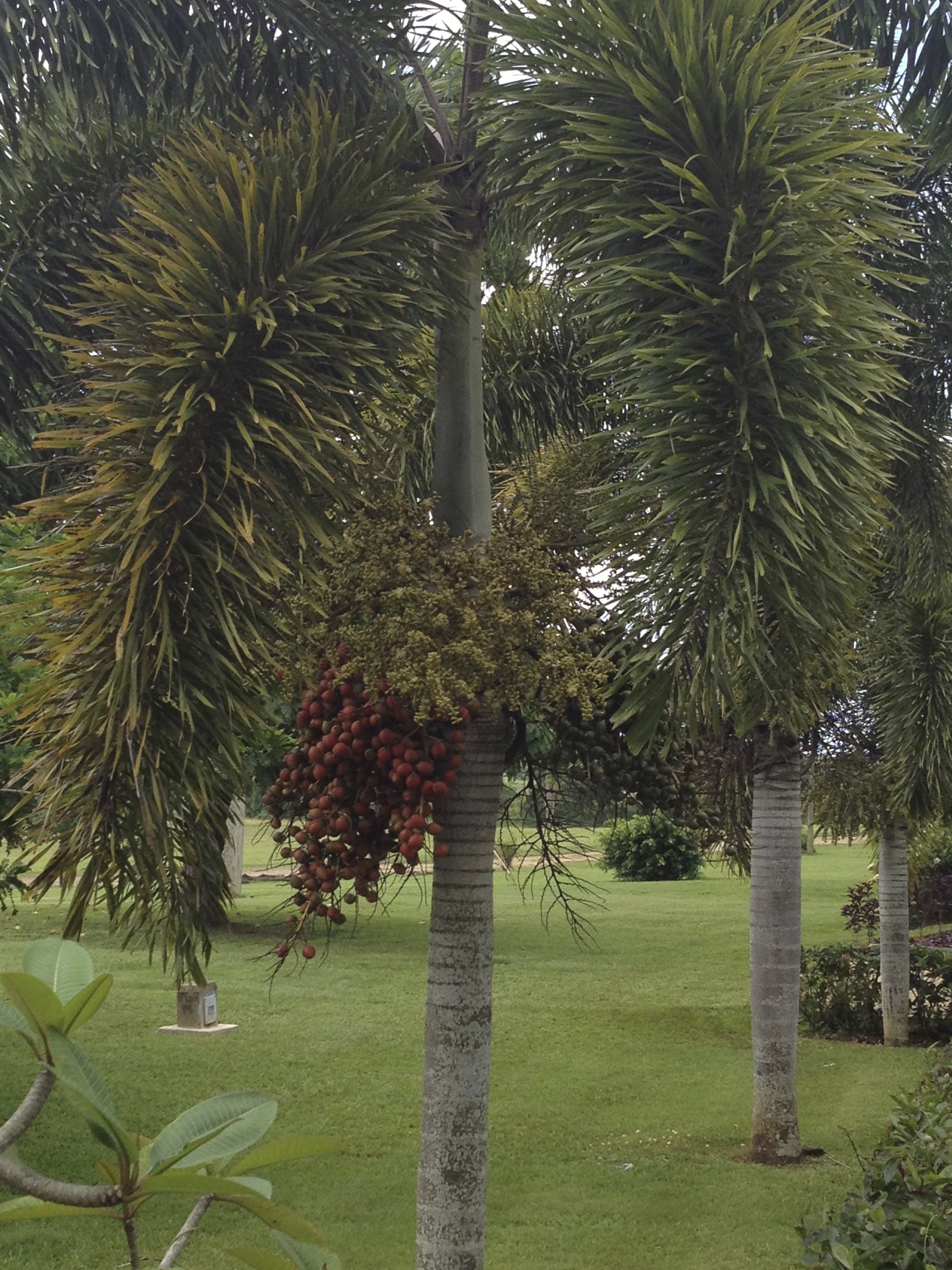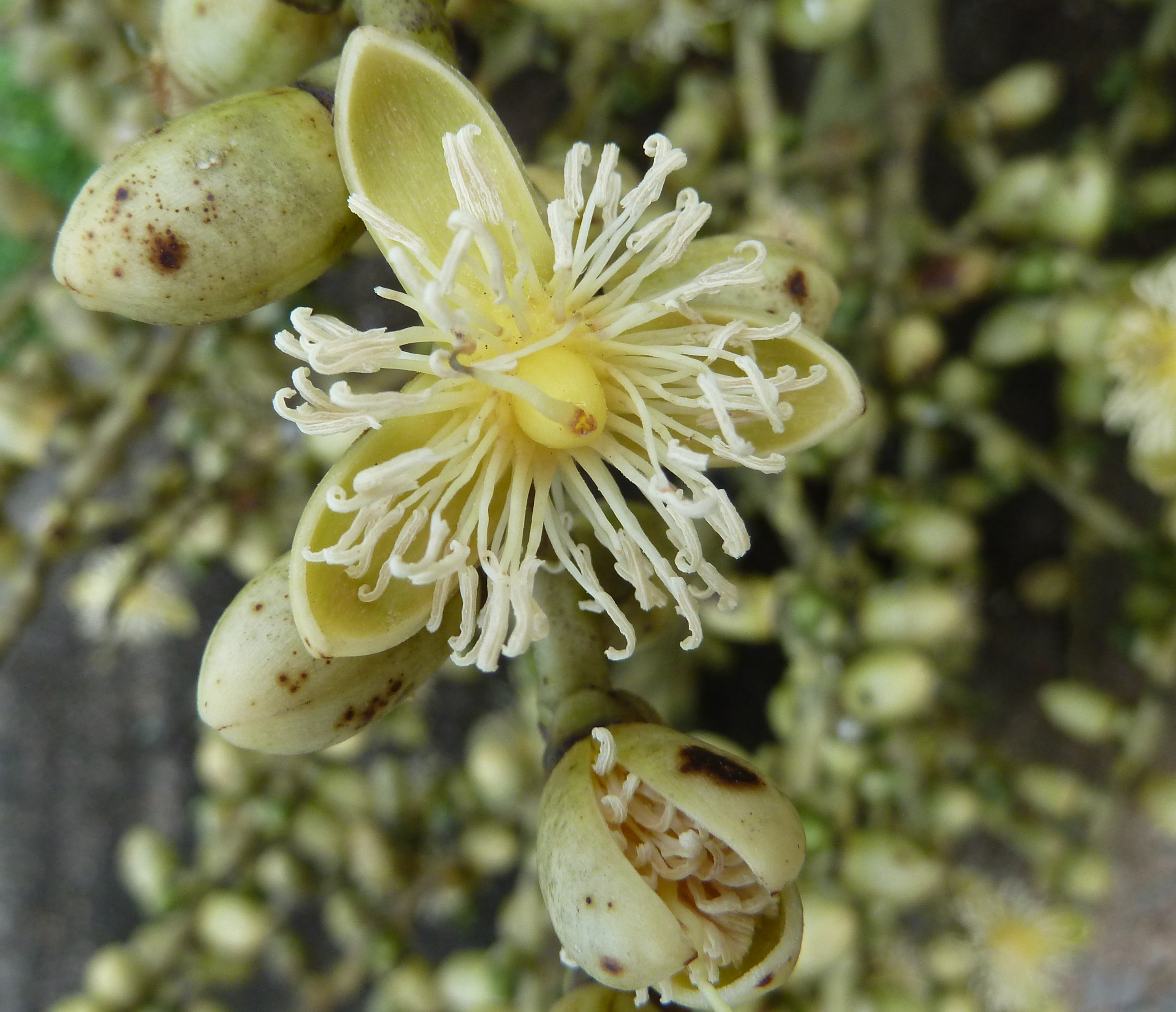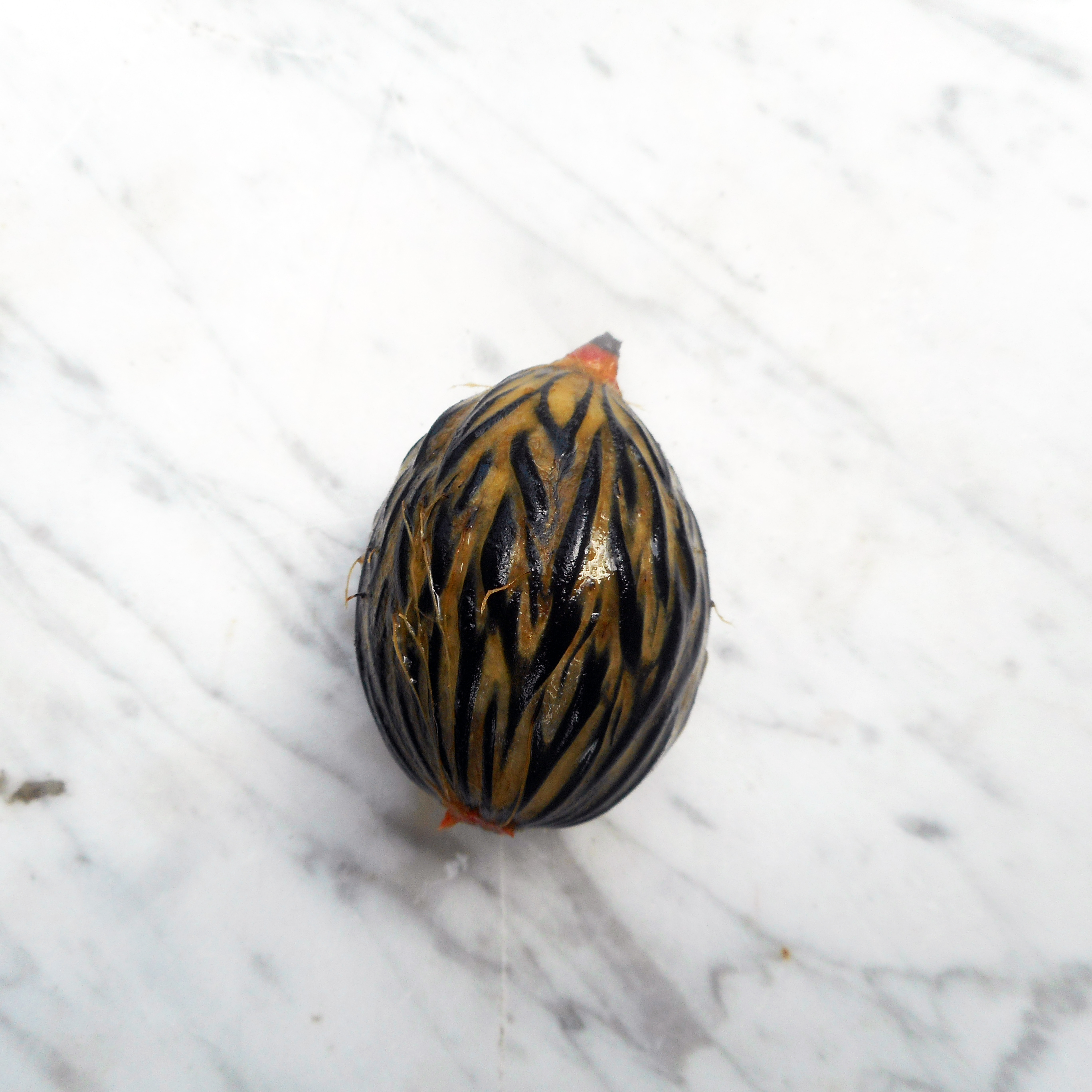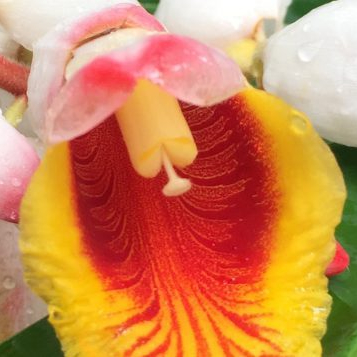Available in single or multi-trunk specimens. Its smooth gray trunk is topped with a bright green crownshaft and big tufted fronds that resemble the bushy tail of a fox. Native to Australia.

By Clau8a – Own work, CC BY-SA 3.0, Link
Classification
Alternate names
Latin name
Wodyetia bifurcata
Family
Arecaceae (palm)
Related species
Cultivars
Characteristics
- self-cleaning
- fast growing
- full sun
- drought tolerant
- ornamental
- non native
- cold tolerant
- toxic seed
- sow seeds in autumn
Description
Bright green bushy fronds. The trunk is light gray to almost white, is somewhat enlarged mid-length, and has dark leaf base scars encircling it. On top of the trunk sits a pale to blue-green, smooth crownshaft, which is the part of the palm where its leaves emerge.

By Chhe at en.wikipedia – I (Chhe (talk)) created this work entirely by myself.
Transferred from en.wikipedia to Commons by SreeBot., Public Domain, Link
The stem’s swollen base becomes slender towards the top, and, when mature, accounts for as much as 3 feet of the palm’s total height. The inflorescence occurs just below the crownshaft, is heavily branched, and bears white male and female flowers.

By Summerdrought – Own work, CC BY-SA 3.0, Link
Fruits are 2 inches long, egg shaped, and orange to red when ripe. Each showy fruit is the size of a small tomato.
After flowering, a more mature foxtail bears a large, heavy cluster of fruit containing seeds.
Size
To 30 feet tall. Fronds can reach lengths of 8 to 10 feet and are attached to stem that is about 6 to 12 inches long. The dark green leaflets are each 1/2 foot long, grow whorled around the rachis, and split into segments at the tips.

By SKsiddhartthan – Own work, CC BY-SA 4.0, Link
Color
Bright green fronds
bright red fruit
Blooming season
Repeatedly
Fruiting season
Lifespan
Natural environment
Uses
Planting and Growing
Requirements
Hardiness zone
9B – 10
Sun
Grows fastest in full sun but will tolerate shade
Water
Drought tolerant once established although they prefer regular watering at the base. Watering from above can encourage leaf spot fungus to develop or can aggravate this fungus if it is already present.
Soil
Foxtail palm prefers a well-drained soil with a slightly acidic pH.
Salt tolerance
Moderate
Cold/heat hardiness
Hardy to 30F.
Planting
When to plant
Sow seeds outside in the fall.
Unblemished fruit must be significantly overripe before harvesting seed; clean and dry seeds.
Seed does not store well; sow as soon as possible.
How to plant
When shopping for a young foxtail, don’t be put off by the sparse appearance and “torn” ends of the leaves – they’ll grow quickly into a full, rounded “tail.”
Plant with organic peat humus or top soil added to the hole.
Foxtail palms will work well in large containers while they’re young.
Fertilization
Foxtails can be heavy feeders. Fertilize with a granular palm fertilizer containing micronutrients…do this in spring, summer and autumn. Supplement feedings by applying manganese or magnesium every so often to keep the fronds their prettiest deep-green color.
Propagation
Each palm has the ability to produce productive and fertile seed.
Maintenance
Don’t need to be trimmed because they’re self cleaning (fronds fall off).
Diseases/Pests
Watering from above can encourage leaf spot fungus to develop or can aggravate this fungus if it is already present.
Cautions
Seed is poisonous if ingested.

By Daniel Di Palma – Own work, CC BY-SA 4.0, Link
Landscape Planning
Fronds are large on this palm, so plant a single specimen at least 8 feet from the house (and even farther for multiple trunks, since they bow out) to allow the head of the palm room to flush out without fronds being damaged.
If planting a row of foxtails, place them at least 6 feet apart. If the “head” of the palm clears a fence or low structure, you can place it as close as 3 feet from the fence.
Landscape uses for foxtail palm
- stand-alone specimen for the yard (especially nice with multiple trunks)
- focal point and large anchor plant for a garden bed
- architectural accent for a two-story house
- center of a circular drive
- lining a walkway or drive
- along the property line
- tropical accent near an uncaged pool
- double-trunk framing a focal point (your front door?) or beautiful view
- container plant (when young) for pool cage or patio
Good companion plants
Golden dewdrop, dwarf oleander, Knock Out rose, Texas sage, dwarf firebush, cocoplum, star jasmine, and firecracker plant.
Notes from the Jungle
Ownership
Considering buying. Would need to buy one taller than the white fence or pot until head will clear fence. I might look for a similar palm that has nontoxic seeds, but I think all palms have toxic seeds. Wonder if fruit is edible.
Placement around the house
Thinking about marking edge of our property along white fence.
